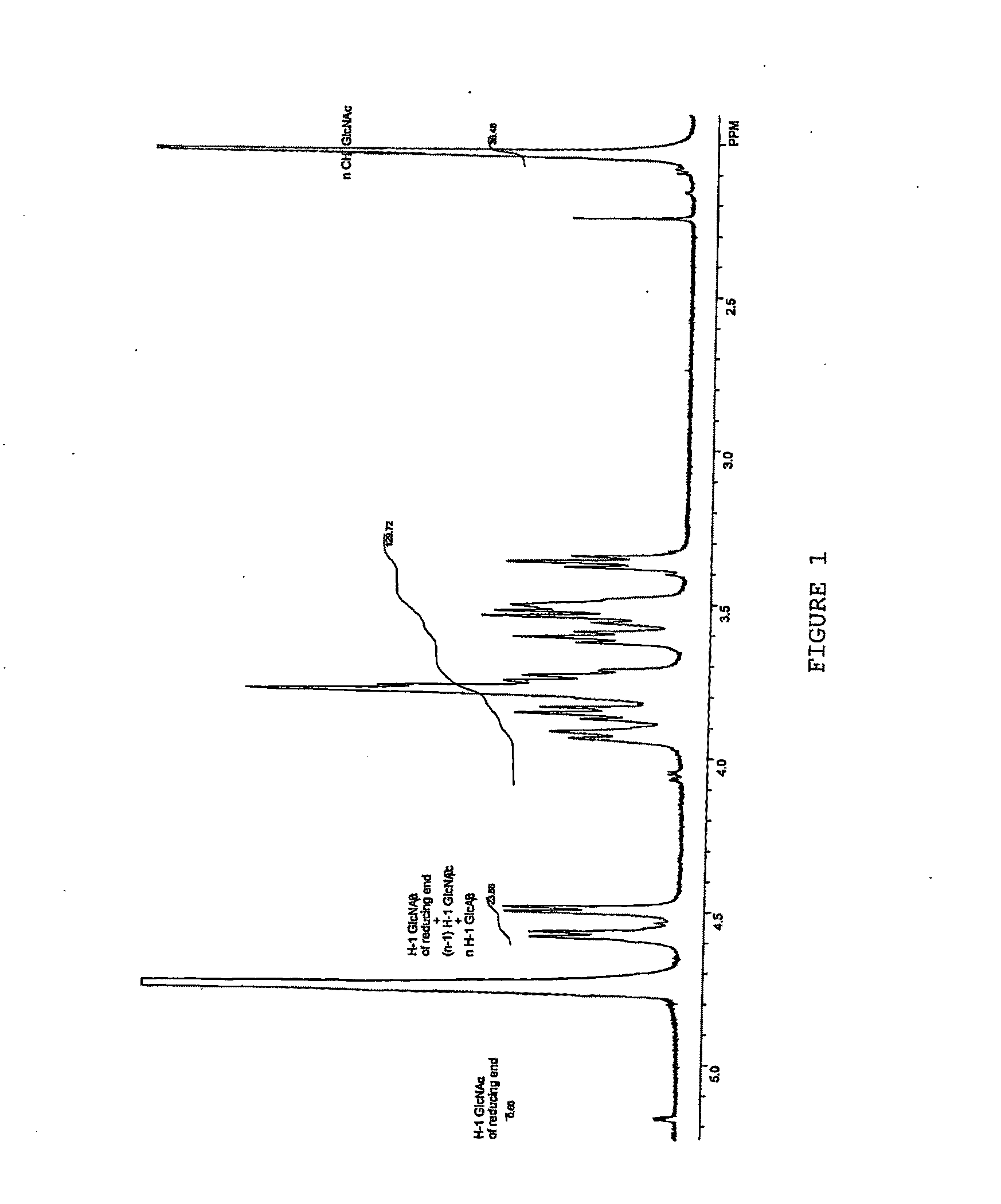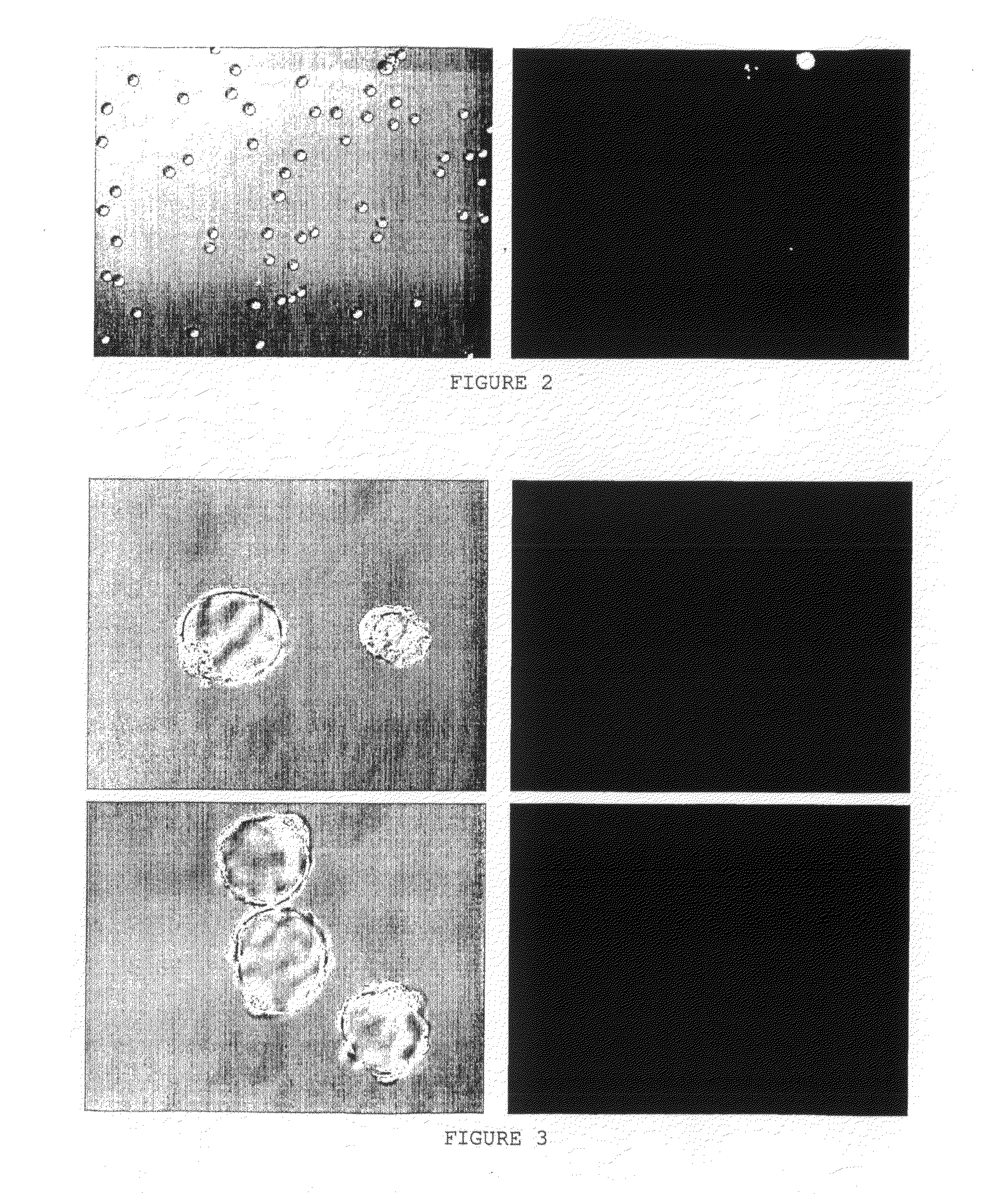Cell Surface Coating with Hyaluronic Acid Oligomer Derivative
a technology of hyaluronic acid and derivatives, which is applied in the direction of sugar derivates, biocides, drug compositions, etc., can solve the problems of unrecognized basis for beneficial effects of ha on implantation and foetal development, and achieve the effect of improving the likelihood of a successful outcom
- Summary
- Abstract
- Description
- Claims
- Application Information
AI Technical Summary
Benefits of technology
Problems solved by technology
Method used
Image
Examples
experiment 1
[0169]Embryos were placed in pre-warmed, de-gassed microdrops containing:[0170]HA15-20 mer-gar-Ad-DOPE (IV)[0171]HA15-20 mer-gar-Ad-DOPE (IV)+HA15-20 mer [0172]HA15-20 mer [0173]Control (media alone)[0174]KC media alone
[0175]Embryos in microdrops were then incubated at 37° C. (+5% CO2) for 24 hours.
[0176]The results are presented in FIG. 3.
experiment 2
[0177]Embryos were placed in pre-warmed, de-gassed microdrops containing:[0178]HA15-20 mer-gar-Ad-DOPE (IV) (zona pellucida removed);[0179]High molecular weight (HMW) HA;[0180]HA15-20 mer-gar-Ad-DOPE (IV);[0181]KC Media with Embryo Glue™;[0182]KC media alone (control).
[0183]Embryos in microdrops were then incubated at 37° C. (+5% CO2) overnight.
[0184]The results are presented in Table 2 and FIGS. 4 and 5.
TABLE 2Insertion of HA-gar-Ad-DOPE (IV) into embryosNumber ofTreatmentα-HAAF α-sheepembryosFluorescenceIV1:201:100142+(zona pellucidaremoved)HMW HA1:201:10010—IV1:201:100122+Embryo Glue ™1:201:1008—Control1:201:10012—
experiment 3
[0185]Embryos were placed in pre-warmed, de-gassed microdrops containing:[0186]HA15-20 mer-gar-Ad-DOPE (IV) (zona pellucida removed)[0187]KC media alone (zona pellucida removed) (control)
[0188]Embryos in microdrops were then incubated at 37° C. (+5% CO2) for 2 hours. Retention of HA15-20 mer-gar-Ad-DOPE (IV) was observed after 2, 5 and 24 hours.
[0189]The results are presented in FIGS. 6 and 7.
HA15-20 mer-gar-Ad-DOPE (IV) In Vitro Murine Embryo Toxicity Studies
[0190]Studies were performed to assess the effects of overnight insertion of HA15-20 mer-gar-Ad-DOPE (IV) on murine embryo morphology and development.
Preparation of Mouse Embryos
[0191]Pre-pubescent C57 / CBA F1 generation mice (21-30 days old) were superovulated by intrapertoneal injection of 5IU of FSH (Folligon, Intravet, NZ) between 15:30 and 17:30, and 48 hours later with 5IU of human chorionic gonadotrophin (Chorulon, Intravet, NZ).
[0192]Each donor mouse was placed with a CBA male stud of proven fertility and checked for a s...
PUM
| Property | Measurement | Unit |
|---|---|---|
| Temperature | aaaaa | aaaaa |
| Temperature | aaaaa | aaaaa |
| Temperature | aaaaa | aaaaa |
Abstract
Description
Claims
Application Information
 Login to View More
Login to View More - R&D
- Intellectual Property
- Life Sciences
- Materials
- Tech Scout
- Unparalleled Data Quality
- Higher Quality Content
- 60% Fewer Hallucinations
Browse by: Latest US Patents, China's latest patents, Technical Efficacy Thesaurus, Application Domain, Technology Topic, Popular Technical Reports.
© 2025 PatSnap. All rights reserved.Legal|Privacy policy|Modern Slavery Act Transparency Statement|Sitemap|About US| Contact US: help@patsnap.com



